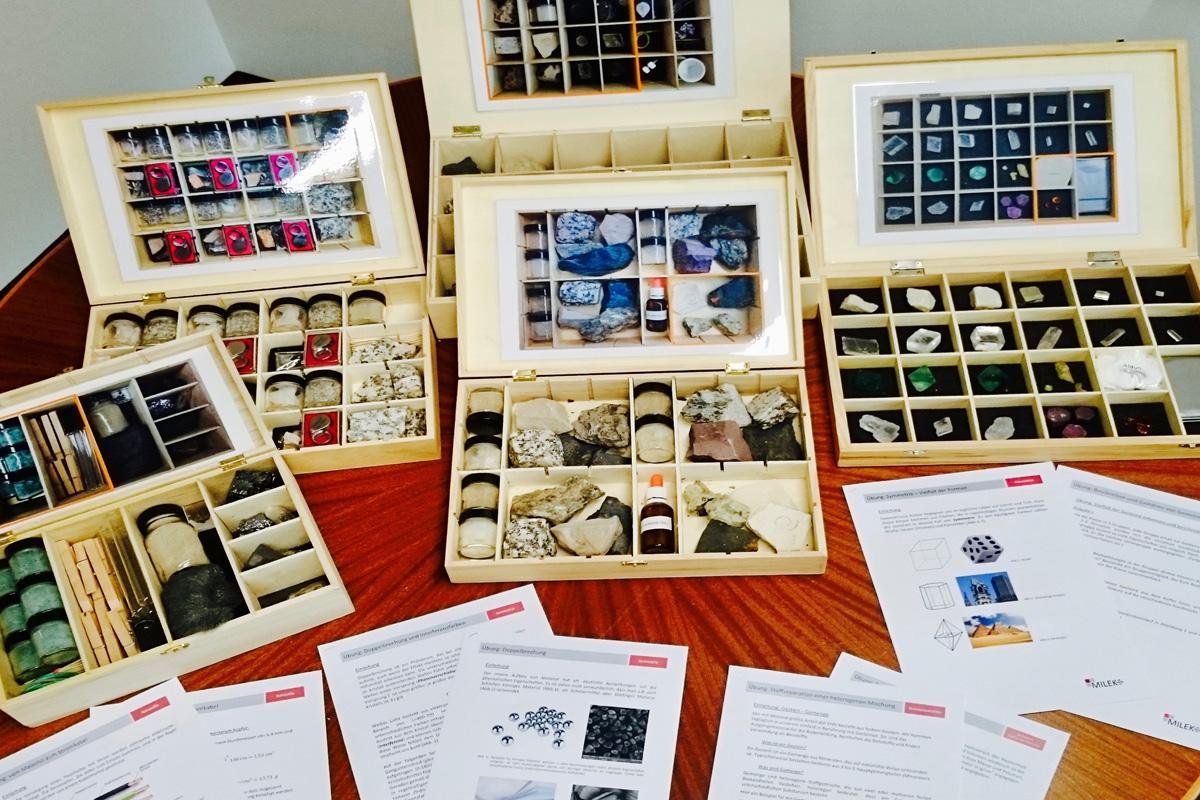An educational case: Mineralogical materials for secondary schools
It is the third lesson, chemistry. The teacher has brought a wooden box and passes out experiment sets and small pieces of a green material. It is "malachite", the seventh graders learn, a frequently occurring ore.
Heated in a glass vessel over a flame, a transformation takes place: water collects at the cool end of the vessel and the crumbs turn black. Then, wood chips are added and heated together with the black lumps. The colour changes again: it becomes copper red.
From the niche to the classroom
The wooden box is one of five modules of the mineralogical teaching case, the variant "raw materials". The students have just extracted metallic copper from the ore with the experiment sets. The teacher ordered the case from a project of the Museum für Naturkunde Berlin - for theshipping fee.
"We bring geoscientific content into school lessons and make it attractive for students and teachers," says Lutz Hecht, project manager at the Museum für Naturkunde. Over the last few decades, geography has developed into a school subject with a more social-scientific focus. Physical geography is only a niche subject in many German federal states. "Our teaching kits are an offer for teachers of natural sciences to expand their teaching thematically and make it very vivid," says Hecht.
The offer is also well received by the actual target group: "As soon as the pupils are able to take something into their hands and examine it, they are enthusiastic about it and learning is even fun," a geography and chemistry teacher reported back.
Five variants
The team of case makers was formed in the working group "School and University" of the German Mineralogical Society. The members use the feedback of the teachers to further develop the offer and to design new worksheets and information sheets for the modules.
The Mineralogical Teaching Case is already available in five versions: A basic module with lots of illustrative material, including a fossil, a "variety of rocks" module, which can be used to explain the influences of temperature and pressure in the earth's interior, and a "granite in individual parts" module, which can be used to illustrate the concept of a heterogeneous mixture. In addition, the module "Raw materials: from ore to metal" is available as well as the particularly colourful and rich in shapes module "Symmetry" for topics such as salts, lattice structures and hardness.
More than 300 cases have already been shipped and Hecht is confident that they will offer a third edition in spring 2019.
Funding
The project is supported by the Alexander Tutsek Foundation.
